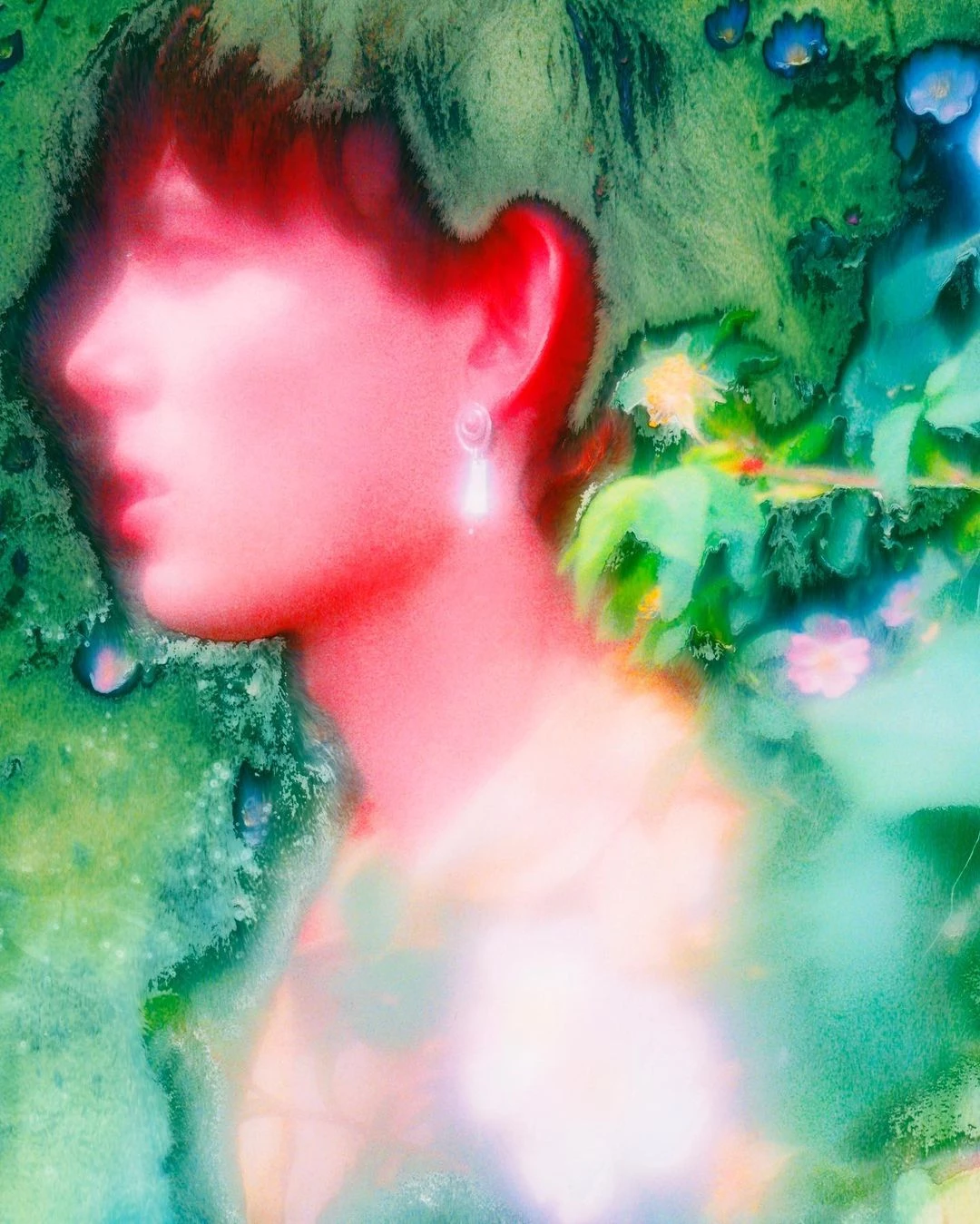
- Date
- 07 JUNE 2023
- Author
- DAVIDE ANDREATTA
- Image by
- JEAN-VINCENT SIMONET
- Categories
- Interviews
On the digital specter haunting analog processes. An interview with Jean Vincent Simonet
Jean-Vincent Simonet (@jean_vincent.simonet) is a Paris and Zurich based photographer whose innovative exploration of photography’s materiality reveals the digital specters inhabiting analog photography.
With their hallucinatory colors, liquid shapes and shifting contours, subjects keep evolving into something else: naked bodies resemble cyborgs or dolls with their supernatural shine and hues, while industrial machines are reduced to abstraction.
Starting from June 17th he will be featured in a solo show in Amsterdam at The Ravestijn.

As a warm up, can you please tell us what sparked your interest in photography? When did you first approach it?
I have always been interested in graphics since I was a kid. From skateboard stickers, to video games and graffiti. Being not able to draw, technical mediums like photography and video came naturally. Photoshop and home computers started to be available when I was a teenager and it always felt natural to play around with softwares. Then I studied at ECAL (Lausanne; CH) and specialized in Photography. This moment confirmed where I wanted to go and paved the way for where I am today.

On your website one can read of the contemporary flood of images (a sentiment I share) which at the same time comes with their disembodiment. So a very material and concrete event, like a flood can be (clearly visible in the anxiety, paranoia and plethora of other psychological issues it generates), is mixed with the increasing immateriality of the medium through which we drown. Do you see a relation of causality in this movement? Is the disembodiment of images, and their faster pace of circulation and decay, a factor contributing to this deluge?
How many images do we see everyday as we spend hours scrolling on Instagram? How many of them can you actually remember? Do they impact your brain the same way? Those are the questions one can ask about the flood of images you quoted. I don’t have definitive answers as I am contributing to the very same phenomenon in a way. I just try to materialize and transform my production via physical forms. I have boxes full of prints I can just open up if I need to get back in touch with reality.
I mean the more images we see, the more education about images we need. Not everybody has the tools to decrypt all the flood. That’s maybe where anxiety and paranoia come from.

While your images possess a digital, one might say hallucinatory, aspect there is an analog process behind their creation. Through a physical intervention you manipulate the print and achieve this kind of look. Can you walk us through the process? Where does this need to alter the photographic surface come from?
Basically as a foil I use special materials made of plastic that I put into a large format inkjet printer. When the prints come out of the printer they’re still wet. After years of experiments I found ways of transforming this surface, using heat, cold, water and chemicals. Once finished, I wash the entire surface in order to erase the ink in excess. Then it dries, becoming fixed. The process could last several days or a few minutes. Each print is unique and closer to painting than photography, but it maintains a certain photographic aspect, I guess that’s why people are curious about my work. It inhabits a gray zone.
I have always wanted to be a painter, however I have no painting skills, no patience and huge anxiety with white canvas. That’s why I hijack inkjet printers to create paintings, using technical tools, mistakes, physics and chemistry. I also like the idea of using photographs as a primary material.

Your work spans across different fields like commissioned photography, editorial and personal explorations: does your approach mutate when it comes to fashion?
I actually work in the same way in every field I approach. I just happen to spend less time working in fashion. Both personal and commercial productions are creatively fulfilling each other and keeping me (almost?) mentally sane.
There is a peculiar phantasmagorical touch in your images that tends to dissolve the subject and open up a space of contamination: what’s solid liquifies, abstraction claims its place in everyday scenarios, the printed surface turns into a canvas. There is no blank space in your art, not at the beginning nor at the end: is this a fight against purity?
I’m more interested in battling emptiness rather than purity, that’s for sure. As I said I am afraid of blank canvas. I also have quite a maximalist approach when dealing with exhibition and books. Maybe it will change in the future but for the moment it’s quite an important aspect of my personality.

Are you interested in the recent development in image production, namely AI? Do you plan to integrate that in your practice?
It’s a question I asked myself a few months ago, but I think not really. I already have so many options with one image, dealing with AI feels vertiginous. It’s really trendy and already a bit behind in terms of aesthetics. Some artists have real skills to talk with AI, I am not that confident with words.
